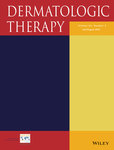Impact of treatment delays on vitiligo during the COVID-19 pandemic: A retrospective study
Xinya Xu and Chengfeng Zhang contributed equally to this work.
Funding information: National Natural Science Foundation of China, Grant/Award Numbers: 81872544, 82073456
Abstract
Due to the COVID-19 pandemic, routine treatments are delayed to some extent and their negative impacts have been widely reported. However, virtually nothing is known about vitiligo in the context of COVID-19. Therefore, we analyzed treatment delays and its impact on vitiligo, aiming to provide suggestions on vitiligo management within this special period. We performed a retrospective cohort study on 322 patients who visited our clinics at least 2 times from January to December 2020, and their medical records and photographs were reviewed. Patients were divided into normal (n = 155) and late group (n = 167) based on whether experienced treatment delays. As for the active cases, the late group showed higher progression rate than normal group (35 of 86 [40.7%] vs. 10 of 81 [12.3%]; p = 0.002). Moreover, we observed higher recurrence rate in delay group than those of normal group (26 of 81[32.1%] vs. 9 of 74 [12.2%]; p = 0.018) among stable cases. Further univariate and multivariate analysis determined treatment delays as the most important independent risk factor for disease progression and recurrence, and maintenance therapy (>2 years) as a protective factor against recurrence. This study, for the first time, revealed the independent adverse impact of treatment delays on the progression and recurrence of vitiligo and indicated the significance of continuous treatment for halting progression and long-term maintenance therapy for preventing recurrence for vitiligo, which should be highly valued in the management of vitiligo during the COVID-19 pandemic.
CONFLICT OF INTEREST
The authors declared no conflict of interest.
Open Research
DATA AVAILABILITY STATEMENT
Data used in this study is available with the 1st author and corresponding author.




